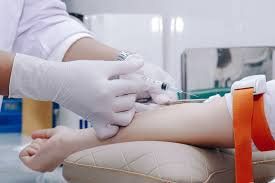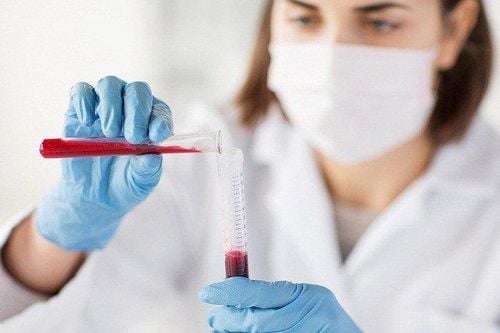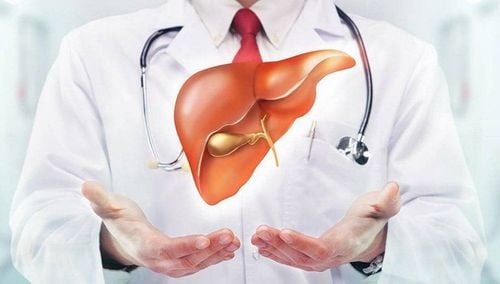This is an automatically translated article.
Antibodies are part of the immune system. They help your body fight germs, but sometimes they make mistakes and attack your body's healthy cells. During the Coombs test, blood is drawn, and then laboratory techniques are performed to look for antibodies that attack red blood cells. You may also hear it called an antiglobulin test or red blood cell antibody screening.
1. Why do you need a Coombs test?
Everyone's red blood cells are not the same. Your immune system will make antibodies if it finds foreign objects in your body. These foreign bodies will be locked into specific areas on the outside of the cell. Some of these antibodies are related to your blood type.
There are two types of Coombs test. The test directly looks for antibodies stuck to red blood cells. The indirect test looks for antibodies floating in the liquid part of your blood, called serum.
2. Under what circumstances are you assigned to perform an indirect Coombs test?
Doctors use the indirect Coombs test, also known as IAT often to prevent these two problems:
Your doctor will test your blood before a blood transfusion to make sure it doesn't have potentially antibodies adverse reactions to donated blood. It's part of the "sorting and screening" process. Pregnant women are screened for prenatal antibodies using an indirect Coombs test. This test checks the mother's blood to see if there are any antibodies that can be passed on to and harm the unborn baby.

Xét nghiệm Coombs
3. Why are you assigned to perform the direct Coombs test?
The direct Coombs test (aka DAT) can help explain why you're not feeling completely well or have suspected symptoms related to your blood. There are 3 common indications for a Coombs test listed below:
You may feel unwell after a blood transfusion if the donor blood does not match. Your body can recognize the transfected blood cells as foreign and make antibodies to eliminate them, although these infused blood cells have the good purpose of helping you. . There is also a blood disease called autoimmune hemolytic anemia, which is when antibodies destroy your own red blood cells faster than your body can make them. You can get this disease for a number of reasons:
Diseases such as lupus and leukemia Infections such as mononucleosis Medicines, including penicillin The baby has yellow skin and eyes due to the infant's hemolytic disease birth (HDN) because certain antibodies from the mother can attack the baby's red blood cells. This happens most often when part of the baby's blood type inherited from the father doesn't get along with the mother.
4. How is the coombs test performed?
The technician will use a needle to take a small sample of blood from a vein in your hand or arm. You may feel a small sting in your skin and have some bleeding or bruising where the needle was inserted. They will then send the blood that has just been taken to a lab.
Both direct and indirect tests can perform a basic search for the presence of antibodies in general or for a particular antibody. Before a blood transfusion, each donated blood pack also needs to be checked.
Cross matching is a special type of IAT (indirect Coombs test) that can be done before a blood transfusion. The lab mixes your serum (containing antibodies) with red blood cells from the donor to see what happens next.

Lấy máu xét nghiệm
5. How are indirect Coombs test results read?
5.1 Negative Indirect Coombs Test Result If the result comes back negative is good news. This proves you have no antibodies in your serum, so you can safely draw blood from your donor without worrying about trouble with your unborn baby
5.2 Indirect Coombs test results positive If the Coombs test is positive for a patient waiting for a transfusion, it is a warning that doctors will have to be careful when choosing donor blood. People who need a lot of blood transfusions often for some reason can develop a lot of different antibodies in their blood and it will be more difficult to find the right blood. A positive pregnancy indirect Coombs test means you may need to take steps to protect your baby. Not all antibodies the test finds are harmful, so it depends on the type of antibodies the test is looking for. You may need more narrowing tests to narrow down which types of antibodies are in your blood. From there the doctor will know what to do next.
6. How do I read live Coombs test results?
The direct Coombs test is positiveThat proves you have antibodies attached to the red blood cells, but it also doesn't necessarily indicate what type of antibody it is and why. Besides direct Coombs test results, you may still need other tests to find the right diagnosis and treatment.
7. Where is the Coombs test performed?

Thực hiện xét nghiệm máu tại các bệnh viện hoặc phòng khám tư nhân
Actually the Coombs test is a common type of test that is fairly easy to perform. You can perform the Coombs test in many hospitals or private clinics equipped with modern equipment. However, you also need to consider to perform the test at reputable locations, which will help ensure the accuracy of the tests conducted.
Vinmec International General Hospital is one of the hospitals that not only ensures professional quality with a team of leading medical doctors, modern equipment and technology, but also stands out for its examination and consultation services. comprehensive and professional medical consultation and treatment; civilized, polite, safe and sterile medical examination and treatment space. Customers when choosing to perform tests here can be completely assured of the accuracy of test results.
Please dial HOTLINE for more information or register for an appointment HERE. Download MyVinmec app to make appointments faster and to manage your bookings easily.
Article reference source: webmd.com












